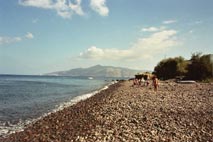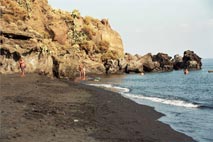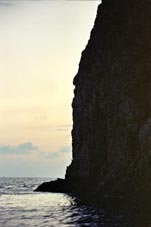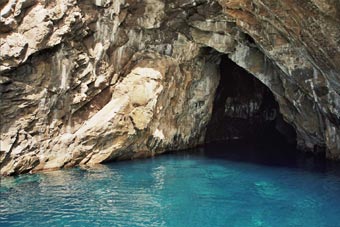|
|
Slow Tuscany
> Tuscany
> Livorno
> The Island of Montecristo
The Island of Montecristo
Damiano
Andreini
|
|
|
"Friend",
said the child, "Didn't the count supposedly say that human
wisdom consists of but one phrase: "wait and hope"?" This
is how one of Alexander Dumas' most famous novels ends- The
Count of Montecristo. The association is not casual. Speaking
of Montecristo, since it continues to rain here in Tuscany we
could go towards the ocean. Actually, let's go all the way to
the middle of the ocean…
I don't know why, but I have always had the impression that
the sun is always shining on these little islands in the middle
of the sea. The Island of Montecristo, approximately
40 miles from the coast of Grosseto, is most famous for having
given its name to Dumas' novel. In 1842, Dumas arrived on the
island with a friend on board of their tiny boat. He immediately
fell in love with it and thought it was "fantastic and lonely,
smelling of thyme and broom." But this little island,
in the shape of "a pointed diamond", has even more fascinating
things secrets to reveal.

The Greeks had named it Artemisia and the Romans Oglada or even
Mons Jovis. It is said that in the fifth century, because of
the persecutions that the Vandals were doing in Sicily, Saint
Mamiliano sought refuge there. Saint Mamiliano was at the time
Bishop of Palermo, and some of his faithful companions accompanied
him to the island. Let's try to imagine them there. After unsuccessfully
seeking refuge in Africa, Sardinia and Elba Island they pressed
on in fear of their persecutors. With deep lines embedded on
their faces from the salt and months of desperate travelling,
they finally found their peace on this tranquil island: safe,
they thought, together with their faith.
But the saint's trouble was not over yet. Legend has it that
as soon as he arrived on the island, Saint Mamiliano fought
against a dragon and killed it by throwing it against a rock.
It was from that very rock that the spring water began to flow
and that even today still gives life to plants and animals that
live on the island. Saint Mamiliano (whose remains are now conserved
in St. Matthew's Church in Pisa) and his followers founded a
monastery that they named Monte Cristo. This is how the island
got its name. In the following centuries the monastery encountered
great difficulties.

The Mediterranean was then plowed through by privateers' ships
that sacked the coastline and then stabilized themselves on
the small islands and used them as bases. For centuries Tuscan
noblemen and the Church continued to send new monks and military
families to Montecristo in hopes of keeping them away from privateer
danger. But their attempts were unsuccessful because in the
1500's, two of the most famous pirates of all- Red Beard and
his successor Dragut- chose Montecristo as one of their favourite
bases.
It was during that time period that Italy was immersed in the
Renaissance and Europe was in combat in the first religious
wars. In Central America Cortes was leading his army in the
bloody conquer of Mexico. And on the little island of Montecristo
the pirate Dragut hid marvellous riches accumulated over years
of privateer raids. This is how the story is told, anyway. Over
the centuries many have attempted to find Dragut's treasures,
but no one has ever been successful. Who knows if it ever even
existed in the secret grotto where it was supposedly hidden.

Most likely, we will never find out. Montecristo receives 50
visitors a day for a total of 1,000 every year. The visits to
the island have a maximum stay of a half-day (including the
boat ride). This year the only ones to visit the island will
be those who made reservations in 1995! To visit it is a challenge,
but in the end doesn't matter much. Montecristo, with its scent
of oleanders and resin, populated over the centuries by saints,
monks and pirates, full of forests, wild animals and waterfalls
will for most of us remain "the island that doesn't exist":
mysterious, magical and beautiful. We'll have to be content
just imagining it like this.
Damiano Andreini |
|
|
